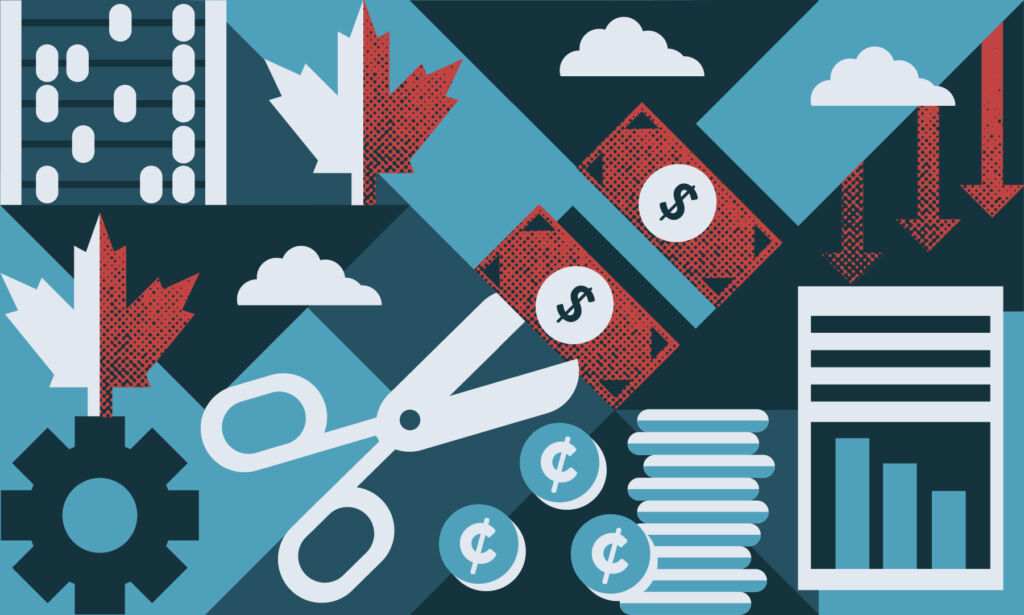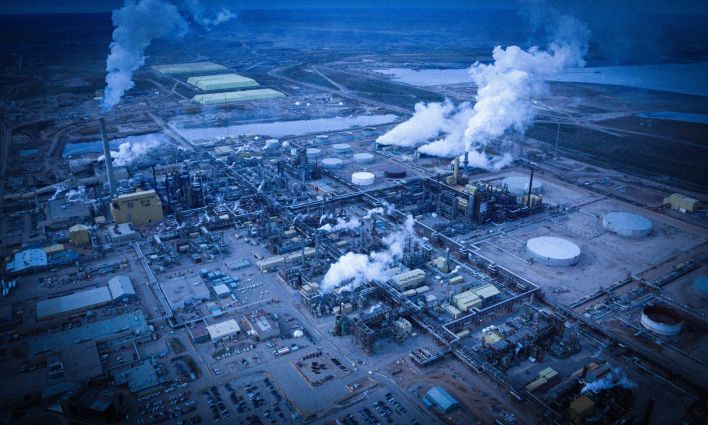The Saskatchewan government has released its first provincial budget in over two years that was not produced under COVID-19 emergency orders.
While the government ended its emergency orders a week prior to the budget release, the virus continues to ravage the province, with hospitalizations and deaths remaining stubbornly high. However, one would not know it listening to Finance Minister Donna Harpauer’s budget speech, in which she proclaimed that Saskatchewan was Back on Track.
For the Saskatchewan Party government, this budget is best understood as a post-pandemic budget regardless of whether we are actually post-pandemic.
Trying to turn the page
The past two years of the pandemic brought to the surface many of the inequities that underline our neoliberal economy, which include: Saskatchewan’s continued reliance on low-wage labour, inadequate health and safety regulations in the workplace, under-staffed and over-worked healthcare professionals, as well as inadequate educational supports and older buildings that cannot protect staff and students from airborne disease.
Governing during the pandemic was a challenge for governments of all political stripes, but it seemed to be a fundamental threat to right-wing parties whose four-decade belief in limited government, tax cuts, private-sector led growth, deregulation, and privatization were not going to solve a problem that required massive public mobilization, solidarity, and government willingness to spend public money to keep society afloat.
And the provincial government certainly had its share of stumbles. Saskatchewan was one of the last of the provinces to declare a public emergency, it rarely led the way with regards to proactive public policies to get in front of the virus, it saw vaccines as the only path out of the pandemic, it ended public health restrictions far too soon in July 2021, it witnessed one of the worst Delta waves in terms of illnesses and death in Fall 2021, and it was the first to lift all public health restrictions and public health data collection at the height of the Omicron wave in winter 2022.
Saskatchewan continues to have one of the highest COVID-19 related death rates in the country. The government’s lackluster COVID-19 record resulted in over 60 per cent of the public stating in a January 2022 poll that Premier Scott Moe and his government had done a poor job handling the pandemic.
The provincial budget, which is entitled Back on Track, seeks to change the page in at least three ways: 1) It seeks to align the government’s steadfast belief in neoliberal economic principles by prioritizing private sector economic growth, specifically in the oil and gas sector, which then builds on the government’s commitment to balance future budgets above all other social policies, 2) It tries to repair relationships in health care through a substantial investment in the sector (with a lot of help from the federal government), and 3) It maintains investments in bricks-and-mortar projects, such as highways, buildings, and a massive commitment to new nuclear energy projects, while underfunding numerous other sectors, not the least of which includes education and social services.
The fiscal priorities of the budget
The 2022-23 budget touts recent investments by the private sector. Several pages are devoted to highlighting new investments in agriculture, mining, forestry, and oil and gas. It appears to signal that the government views the private sector as the driving force of any recovery post-pandemic—as though the government has much, if any, role to play in the direction of the economy.
That such investments will grow the economy and create long-term employment is taken as a given, regardless of the actual turmoil in the global commodities market, where long-term stability is increasingly impossible to predict. Nevertheless, these investments are not promoted for what they are—global capital responding to an upswing in commodity prices—but, rather, they’re framed as a consequence of the government’s steady economic hand.
Many of the tax and spending changes in the budget align with continuing a provincial policy that caters to capital’s demand for low tax and royalty structures to attract more investment. There are no substantial changes to the business tax structure and resource extraction royalty rates.
This partially explains why, despite the upswing in economic activity and new money being collected due to surging resource prices, the province maintains a $463 million deficit—albeit one significantly reduced from the $2.1 billion deficit in the previous year’s budget. Indeed, CCPA Senior Economist David Macdonald says that fully 22 per cent of Saskatchewan’s 2021 deficit was the result of planned revenue reductions, such as the elimination of the small business tax until 2023 as well as electricity and insurance refunds.
Overall, the government forecasts $17.2 billion in revenue, up $2.7 billion from the previous year, which is largely fuelled by higher commodity prices, in particular oil and gas.
The government plans to spend $17.6 billion, up $531 million (which is a 3.1 per cent increase from the previous year). Total public debt is forecast to be $30 billion, a $2.3 billion increase. Much of the new borrowing is for capital investment.
The government’s path to a balanced budget by 2025-26 is based on real GDP growth of 3.5 per cent from 2021 and 3.7 per cent for 2022. While these projections are modest, given the increasing prices for oil and gas and agricultural commodities, they reflect a cautious optimism about the longer-term boom in commodities that the government believes will continue in the short- to moderate-term.
The government projects that corporate tax revenue will grow by roughly $53 million, largely from economic growth.
The government has also chosen to leave royalty structures for the public’s non-renewable resources alone, where increased activity in these sectors only make up 17 per cent of total government revenue.
Small business continues to receive a generous tax holiday from the provincial government, paying zero taxes until July 1, 2022 and moving to a 1 per cent tax rate until July 1, 2023, when that rate will go up to 2 per cent. Businesses are receiving a very good deal from this government.
The province also has not drastically changed its personal income tax structure, where it collects the bulk of its income, reflecting close to 35 per cent of all government revenue. Rather, the government decided to extend the provincial sales tax, which is a more regressive consumption tax, to a host of cultural and sporting activities. These changes add PST to sporting events, concerts, museums, fairs, gym memberships, and golfing green fees (with some exemptions). The government expects these changes to add an additional $104 million dollars to the provincial treasury, which is an increase of 4.5 per cent.
One of the real concerns highlighted in this year’s budget is the government’s lack of vision for the future of the Saskatchewan economy. While the government routinely pats itself on the back for its almost singular focus on “the economy,” it rarely promotes a vision to address longer-term issues of productivity or innovation. Funds for training, for innovation, or for building tomorrow’s workforce are glaringly absent in this budget and has led the Conference Board of Canada to rate Saskatchewan at the very bottom of its Innovation Report Card in 2021.
The government will also benefit from record amounts of federal government transfers this year, some of which are targeted for the new universal child care program announced by the federal government ($140.5 million this year) and $17.1 million for cleaning up oil wells abandoned by the private sector.
Recent announcements by the federal government also include $62 million in federal money to address surgical backlogs in the health system and with that injection of new money, the Saskatchewan government is already contemplating diverting some of its public money to address surgical wait times elsewhere.
Spending and the COVID-19 fallout
On the spending side, the province has prioritized health as an important area of public policy concern, given the impacts of the pandemic on the system and its workforce. Representing almost 40 per cent of the provincial budget ($6.8 billion in total expenditures), the government is promising an increase of 4.4 per cent ($288.2 million) from the previous year, with new monies to address salaries, operating costs, mental health, and other health care backlogs exacerbated by COVID-19. Perhaps the most ambitious new program in this area is the government’s priority to spend $5 million on recruitment and retention of health care professionals, targeting rural areas, in particular.
The kindergarten to Grade 12 and advanced education sectors were neglected in this budget. Under this government, real increased funding for the educational sector has been lacking; new spending barely covers the cost of operations. The government has increased the education property mill rate by 2.6 per cent while only increasing spending by 1.3 per cent.
Spending directed at the province’s 27 school divisions is mostly to cover the 2 per cent negotiated teacher salary increase in 2020, with some minor increases for school supports and learning assistants—although some divisions are already announcing staff cuts in lieu of what they say is inadequate provincial funding. Throughout the pandemic the government claimed schools were too important for children and communities to close, yet there is a lack of financial support for schools in this budget.
Advanced education continues to receive no new monies that aren’t related to COVID-19, making this yet another year where universities and colleges have received next to zero support from the government. Considering the province’s 5 per cent spending cut in 2017 and the subsequent zeros in new money since then, today’s universities are receiving less money in 2022-23, on a real basis, than they were in 2015. This has already translated into higher tuition for Saskatchewan students and will result in a weakening of access to advanced training for jobs in tomorrow’s economy.
Social services received an increase of 4.3 per cent compared to previous years, with small increases in the province’s income support benefits, benefits to seniors, people with disabilities, and a $11.5 million increase in housing support benefits. Despite the government’s stated commitment to improve access to training and jobs for those on social assistance, this budget maintains the second lowest minimum wage in the country: a paltry $11.81 per hour (second only to New Brunswick at $11.75 per hour.
Finally, despite the fact that Saskatchewan has the highest per capital greenhouse gas emissions in the country, the budget made no mention of climate change and contained no new climate initiatives, demonstrating the government’s continuing failure to view the climate emergency with any sense of urgency. In fact, recent announcements show the government is increasingly fixated on the questionable promise of small modular reactors as their preferred solution to de-carbonization of the province’s electricity system.
What it all means
There is no doubt that the 2022-23 budget was an attempt by the government to turn the page on the pandemic, while offering little in the way of investments, except for health care, to recover from the ongoing impacts of COVID-19. Despite the pandemic’s stubborn refusal to go away, the Saskatchewan government would like nothing more than to govern as if it no longer existed. This budget simply offers a return to business as usual, impossible as that reality may be. While it is a vision that has served this government for more than a decade, will it be sufficient for the uncertainties and challenges we can expect in a truly post-pandemic world? We have our doubts.
Charles Smith is an Associate Professor in the Department of Political Science at St. Thomas More College, University of Saskatchewan.
Simon Enoch is the Director of the Saskatchewan Office of the Canadian Centre for Policy Alternatives







